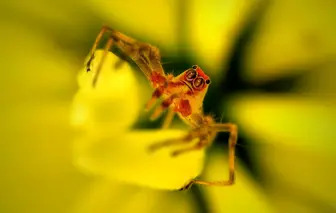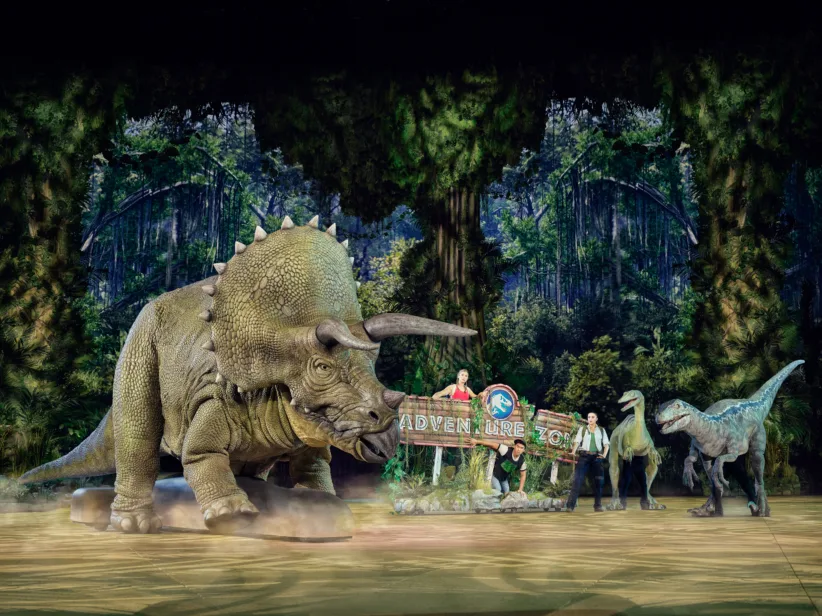With the recent launch of the fourth Spiderman film and the reign of Broadway’s Spider-Man, Turn Off the Dark, your kids might be showing interest in arachnids. So, how do Spiderman’s abilities stack up against those of a real spider? For parents who want to sound smart about the “real deal,” here are some fun facts about spiders courtesy of the National Wildlife Federation.
 The alter ego of Spiderman, Peter Parker became a superhero when he was bitten by an irradiated spider that injected radioactive chemicals into his body, giving him superhuman strength and agility, the ability to cling to most surfaces and thus run up walls, and a spider-sense that warns him of danger. You’ve probably been bitten by an irradiated spider yourself, so you know how it goes.
The alter ego of Spiderman, Peter Parker became a superhero when he was bitten by an irradiated spider that injected radioactive chemicals into his body, giving him superhuman strength and agility, the ability to cling to most surfaces and thus run up walls, and a spider-sense that warns him of danger. You’ve probably been bitten by an irradiated spider yourself, so you know how it goes.
With that background, we get to today’s question:
How do Spiderman’s abilities stack up against those of a real spider?
Read on.
Strength and Agility
Spiderman is famed for his web-suspended swings from building to building over city streets. You can find examples of equally amazing leaps and bounds among real arachnids if you take a look at the jumping spiders. In a single leap a jumping spider can cover as much as 50 times its own length. It does so by using a powerful internal muscle that blasts fluids from the body into the legs, flinging the spider through the air (if the current holder of the world record for the long jump, Norwegian Arne Tvervaag, could make a comparable leap, he’d cover about 300 feet from a standing start; instead his record, set in 1968, is 12 feet 2 inches).

A Magnolia jumping spider, photographed by Jeffery Waldorff
Walking Up Walls
Thanks to a stick-to-almost-anything skin, Spiderman can walk up walls. So can most spiders (if you’re a tarantula, do not try this at home—you’re too big and meant for burrowing). Each leg of a spider capable of climbing walls ends in a brushy covering of hair, and the end of each hair is in turn covered with microscopic organs that can take hold of small bumps in most surfaces, allowing the spider to go up walls and even across ceilings. This ability may be defeated (no pun intended; okay, it was intended) by very smooth surfaces, such as that of a bathroom sink.
Spider Sense
Spiderman is able to sense danger lurking near, the warning signal coming as a pain in his head that varies with the intensity of the threat. Spiders can detect danger coming their way with an early-warning system called eyes. You probably expected that. But that’s not all: their most important source of information about the world and its hazards comes from highly sensitive hairs that cover the bodies of most spiders. These hairs perceive even low-level vibrations coming through whatever surface a spider is standing on. Many species also bear hairs that sense vibrations in the air, including sound.

Challenge the arachnid-lovers in your brood to a round of Spider Bingo
Webs
Spiderman can fire strands of web from his wrists. Early in his career, he invented devices for doing this, but in later incarnations he developed biological adaptations that allowed him to make webs naturally. He can capture villains with the sticky stuff and use it like ropes for swinging from building to building. Real spiders produce several types of webs—some that are not sticky but serve as a superstructure for webs, some that are sticky and capture prey, some used for wrapping up prey in neat little packages (which, in some species, are given as gifts by males to females while courting; whether Spiderman has super gift-giving powers remains unrecorded). Some smaller spiders producer gossamer web, used as a sort of sail that catches the wind and can carry a spider far and wide, which probably explains in part why spiders are found almost everywhere in the world.
Spider silk comes from glands on the arachnid’s posterior, with different silks produced by different types of glands. Some silks are comparable in strength to high-grade alloy steel and can stretch up to four times their relaxed length without breaking. Made basically of protein and water, the silk is extremely light weight once it dries. A single strand long enough to encircle the globe would weigh about 1 pound 2 ounces.
For more information on spiders, begin by checking out
http://science.howstuffworks.com/environmental/life/zoology/insects-arachnids/spider.htm
The above article was provided by the National Wildlife Federation, a nonprofit organization that works to protect and restore wildlife and habitat, confront global warming, and connect kids with nature. For more information, visit nwf.org.





















